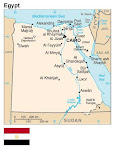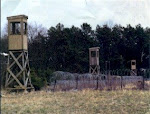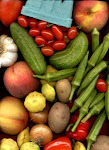 Al Hermanson, who farms near Story City, said someone Thursday night reminded him that this would be a good time to take an airplane ride and find out which farms one might want to buy and which ones one wouldn't.
Al Hermanson, who farms near Story City, said someone Thursday night reminded him that this would be a good time to take an airplane ride and find out which farms one might want to buy and which ones one wouldn't.While cities deal with evacuation and property damage, fields across Iowa are inundated, too, threatening to undercut farm income."There are lots and lots of saturated soils, lots of ponded soils and lots of flooding," said John Holmes, Iowa State University Extension field agronomist. "Corn is turning yellow, which is a reflection of saturated soils. It shows the stress."
Holmes estimated that corn yield will be only 60 to 65 percent of potential due to flooding, producing at a rate of 130 to 135 bushels per acre."Prices are good, thankfully," he said, "but you've got to get it."Many farmers have yet to plant soybeans, which are planted later than corn. And some corn has yet to go in.Hermanson, who was able to plant 3,600 acres of corn, credits his "strip till" equipment that allows him to plant on firmer soil and with closer rows than typical. He's also planted all his soybeans. But the wet weather still means things are not growing."We've had some bonanza years, and the trend lines are going to be down now, without question" Hermanson said. "The economic engine of Iowa is suffering."Individual losses will depend on when farmers were able to plant, when they applied fertilizer and what kind of insurance they bought in to.Holmes noted that the floods are taking an emotional toll, too."These conditions are having an effect on families. I'm sure the stress level has gone way up," he said.His advice to farmers: "Be patient, don't just charge in and try to mud things in."State and federal assistance may be available to farmers who want to re-plant or apply for other aid.Dustin Vande Hoef, spokesman for Iowa Agriculture Secretary Bill Northey, said the state's Farm Service Agencies are responsible for getting flooding information to state and federal authorities."Crop damage, what can be re-planted, how many acres are flooded - all of that goes through the FSA," said Vande Hoef, who was on a tour of flood-ravaged areas near Manchester.A state declaration of emergency will trigger some additional aids for farmers, but Vande Hoef said the FSA is the best place for farmers to call for specifics.Rod Biensen, of the FSA's Nevada office, said this morning that estimates of crop damage in Story and surrounding counties is "mainly guesswork, at present."It's too soon to tell how much of the crops can be re-planted in time" to assure some kind of harvest this fall, Biensen added. "Those are numbers we are still trying to total up."A three-member board works with the Nevada FSA office and helps to gather statistics on flooding and crop damage, according to Biensen. Those numbers are forwarded to state authorities as part of a process to determine whether a federal disaster declaration is in order, he said.Corn prices soared to a new record Thursday. Outside of Iowa, corn-growing states of Indiana, Illinois and Ohio also have been hit by up to 6 inches of rain. Forecasts show bad weather moving toward Minnesota, Wisconsin and Nebraska over the next five days."They're starting to really worry about the rainfall and the saturated soil," said Jason Ward, analyst with Northstar Commodity in Minneapolis. "The biggest risk is when the wet soil hardens from the sun, which will make it very difficult for the corn to grow."Corn futures for July delivery jumped 28.75 cents to reach a new settlement record of $6.4325 on the Chicago Board of Trade.U.S. farmers were expected to plant 86 million acres of corn this year, but wet weather in Midwestern states has left 4 million acres unplanted. If the remaining fields aren't planted by June 10, farmers will either leave them empty and take insurance payments or switch the acres over to soybeans. That would likely lift corn prices further, forcing consumers to pay higher grocery bills for meat and pork, as livestock producers would be forced to pass on higher animal feed costs and thin their herd size."The odds of $7 or $7.50 corn are much higher with the start we've had," Ward said.Staff writers Bob Zientara and David Kraemer and the Associated Press contributed to this report.
Holmes estimated that corn yield will be only 60 to 65 percent of potential due to flooding, producing at a rate of 130 to 135 bushels per acre."Prices are good, thankfully," he said, "but you've got to get it."Many farmers have yet to plant soybeans, which are planted later than corn. And some corn has yet to go in.Hermanson, who was able to plant 3,600 acres of corn, credits his "strip till" equipment that allows him to plant on firmer soil and with closer rows than typical. He's also planted all his soybeans. But the wet weather still means things are not growing."We've had some bonanza years, and the trend lines are going to be down now, without question" Hermanson said. "The economic engine of Iowa is suffering."Individual losses will depend on when farmers were able to plant, when they applied fertilizer and what kind of insurance they bought in to.Holmes noted that the floods are taking an emotional toll, too."These conditions are having an effect on families. I'm sure the stress level has gone way up," he said.His advice to farmers: "Be patient, don't just charge in and try to mud things in."State and federal assistance may be available to farmers who want to re-plant or apply for other aid.Dustin Vande Hoef, spokesman for Iowa Agriculture Secretary Bill Northey, said the state's Farm Service Agencies are responsible for getting flooding information to state and federal authorities."Crop damage, what can be re-planted, how many acres are flooded - all of that goes through the FSA," said Vande Hoef, who was on a tour of flood-ravaged areas near Manchester.A state declaration of emergency will trigger some additional aids for farmers, but Vande Hoef said the FSA is the best place for farmers to call for specifics.Rod Biensen, of the FSA's Nevada office, said this morning that estimates of crop damage in Story and surrounding counties is "mainly guesswork, at present."It's too soon to tell how much of the crops can be re-planted in time" to assure some kind of harvest this fall, Biensen added. "Those are numbers we are still trying to total up."A three-member board works with the Nevada FSA office and helps to gather statistics on flooding and crop damage, according to Biensen. Those numbers are forwarded to state authorities as part of a process to determine whether a federal disaster declaration is in order, he said.Corn prices soared to a new record Thursday. Outside of Iowa, corn-growing states of Indiana, Illinois and Ohio also have been hit by up to 6 inches of rain. Forecasts show bad weather moving toward Minnesota, Wisconsin and Nebraska over the next five days."They're starting to really worry about the rainfall and the saturated soil," said Jason Ward, analyst with Northstar Commodity in Minneapolis. "The biggest risk is when the wet soil hardens from the sun, which will make it very difficult for the corn to grow."Corn futures for July delivery jumped 28.75 cents to reach a new settlement record of $6.4325 on the Chicago Board of Trade.U.S. farmers were expected to plant 86 million acres of corn this year, but wet weather in Midwestern states has left 4 million acres unplanted. If the remaining fields aren't planted by June 10, farmers will either leave them empty and take insurance payments or switch the acres over to soybeans. That would likely lift corn prices further, forcing consumers to pay higher grocery bills for meat and pork, as livestock producers would be forced to pass on higher animal feed costs and thin their herd size."The odds of $7 or $7.50 corn are much higher with the start we've had," Ward said.Staff writers Bob Zientara and David Kraemer and the Associated Press contributed to this report.
By Karl Hauber/The Tribune
As in the days of Noah....






















































































.bmp)

























.bmp)